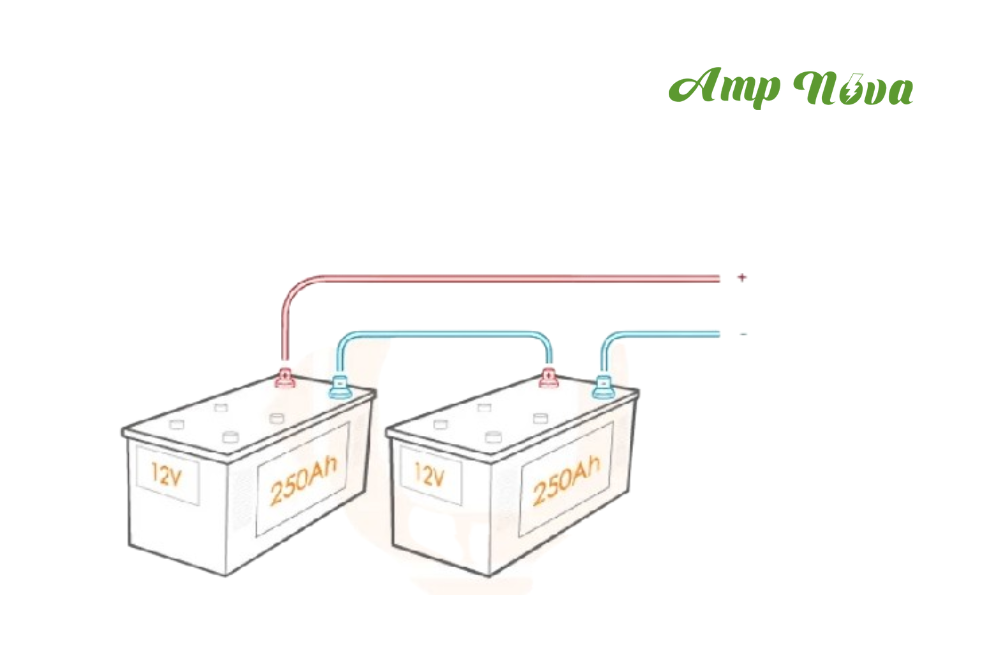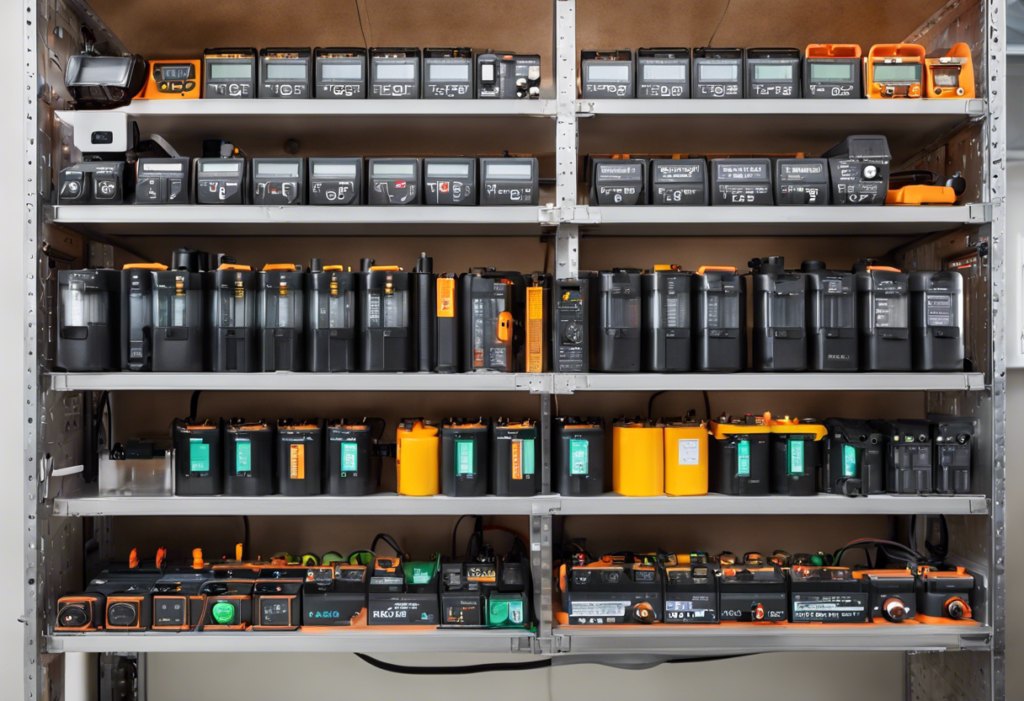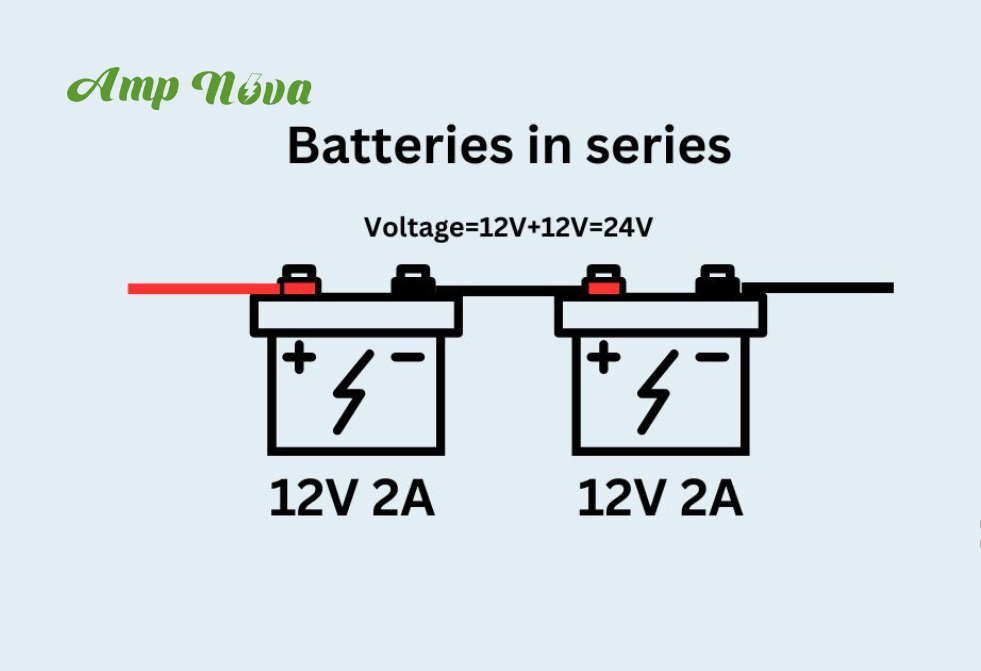- Introduction to Battery Configuration
- Understanding Series Connections
- Benefit 1: Increased Voltage Output
- Benefit 2: Simplified Battery Management
- Benefit 3: Enhanced Design Flexibility
- Benefit 4: Cost-Effectiveness
- Benefit 5: Compatibility with High-Voltage Applications
- Technical Considerations for Series Connection
- Safety Precautions in Series Battery Connections
- Maintenance Tips for Series-Connected Batteries
- Real-World Applications and Examples of Series Connections
Contents
- 1 Introduction to Battery Configuration
- 2 Understanding Series Connections
- 3 Benefit 1: Increased Voltage Output
- 4 Benefit 2: Simplified Battery Management
- 5 Benefit 3: Enhanced Design Flexibility
- 6 Benefit 4: Cost-Effectiveness
- 7 Benefit 5: Compatibility with High-Voltage Applications
- 8 Technical Considerations for Series Connection
- 9 Safety Precautions in Series Battery Connections
- 10 Maintenance Tips for Series-Connected Batteries
- 11 Real-World Applications and Examples of Series Connections
Introduction to Battery Configuration

When users need a portable power source, batteries are a fundamental component. Understanding battery configuration is vital for optimizing energy storage systems. Connecting batteries in series is a common approach to increase voltage while maintaining the same capacity rating in ampere-hours (Ah). Each battery’s voltage adds up, providing greater power for applications requiring higher voltage. However, individual capacities do not increase; they remain dictated by the lowest capacity battery in the sequence. Proper configuration ensures effective performance and longevity of the battery system.
Understanding Series Connections
When connecting batteries in series, the aim is to increase the voltage while keeping the current (amp-hour rating) constant. In a series circuit, two or more batteries are linked by connecting the positive terminal of one battery to the negative terminal of the next. This setup effectively combines the voltage of each battery, resulting in a total voltage output that is the sum of the individual battery voltages. However, the capacity of the batteries remains the same as that of a single battery.
- The total voltage (V) of a series circuit equals the sum of the voltages of all the individual batteries (V1 + V2 + … + Vn).
- The capacity (Ah) remains unchanged, equal to that of a single battery.
- The batteries in series must have the same current rating to avoid imbalance and potential damage.
- A series connection is signified by having only one path for the electric current to flow from the starting point to the endpoint.
Understanding series connections is crucial for safe and efficient battery configuration, ensuring enhanced performance for high-voltage applications.
Benefit 1: Increased Voltage Output

Connecting batteries in series effectively increases the voltage output of the system. This configuration involves connecting the positive terminal of one battery to the negative terminal of another, and so on. As a result:
- The voltage output becomes the sum of the individual battery voltages.
- If each battery has a voltage of 2 volts, connecting five in series would result in a total output of 10 volts.
- This higher voltage is beneficial for applications requiring more power without altering the capacity of the individual batteries.
- Devices designed to operate at higher voltages achieve enhanced performance.
- The increased voltage can improve the efficiency of electrical systems by reducing current loss over long distances.
Benefit 2: Simplified Battery Management
Connecting batteries in series can dramatically simplify battery management, especially in terms of charging and monitoring systems. By series configurations:
- A single charger can be used to replenish the entire battery chain, making it easier to maintain and reducing the need for multiple chargers.
- Battery monitoring systems can oversee the series-connected batteries as a single unit, allowing for streamlined data collection and analysis.
- It harmonizes the voltage levels across the batteries, reducing the complexity of monitoring individual cell voltages.
- Reduces the variety of replacement parts needed, as all batteries in the chain are of the same type and voltage.
Ultimately, a series connection promotes greater efficiency in managing battery-powered systems.
Benefit 3: Enhanced Design Flexibility

Connecting batteries in series offers increased design versatility for engineers and technicians. This configuration not only allows for higher voltage requirements to be met without the need for custom-made batteries, but it also grants the freedom to:
- Adapt to spatial constraints: Arranging batteries in series can provide a more compact design where space is at a premium.
- Create modular systems: Series connections facilitate the construction of modular power systems that can be easily expanded or altered as needed.
- Tailor performance characteristics: Designers can fine-tune the voltage and capacity to match specific application demands by choosing the number and type of connected batteries in series.
Benefit 4: Cost-Effectiveness
When batteries are connected in series, the total cost of achieving a desired voltage level can be lower than using a single, high-voltage battery. This configuration allows for:
- The use of standardized, lower-voltage batteries that are often more readily available and less expensive.
- Reduced need for custom battery solutions, which can carry higher design and manufacturing costs.
- The capability to replace individual batteries as needed, rather than the entire system, promoting cost savings in maintenance and replacements over time.
Connecting batteries in series thus presents a cost-efficient approach to powering devices and systems that require higher operating voltages.
Benefit 5: Compatibility with High-Voltage Applications
Connecting batteries in series is advantageous when powering high-voltage applications. In series circuits, the voltage output is the sum of the voltages of all the individual cells combined. This means that if each battery has a voltage of 12 volts, connecting five in series would yield a 60-volt output. Such configurations enable the use of batteries in applications requiring higher operating voltages that individual cells cannot provide, such as in certain industrial equipment, electric vehicles, or backup power systems for buildings. The ability to reach these voltages without the need for a transformer or a power converter simplifies the design and can reduce costs.
Technical Considerations for Series Connection
In wiring batteries in series, technical factors must be respected for both safety and performance. Here are key considerations:
- Voltage Matching: Ensure all batteries have the same voltage rating to avoid unbalanced charging.
- Capacity Consistency: Batteries should also have the same capacity to prevent premature discharge of any single unit.
- Battery Age: Combining new and old batteries can lead to reduced performance and potential hazards.
- Quality of Connections: Secure and clean connections are crucial to maintain consistent voltage and current flow.
- Monitoring and Protection: Implement system checks for overcharging, deep discharging, and thermal anomalies.
- Charging Regimen: Employ chargers designed for series charging to avert damage from uneven electric distribution.
Safety Precautions in Series Battery Connections
When connecting batteries in series, safety is paramount. To ensure a secure setup:
- Always match batteries of the same voltage and capacity to prevent imbalance.
- Utilize proper protective equipment, such as gloves and eye protection, to avoid injury.
- Confirm that the charging system is compatible with the series configuration to avoid overcharging.
- Keep batteries in a well-ventilated area to dissipate heat and prevent gas buildup.
- Regularly inspect connections for corrosion or damage, replacing components as necessary.
- Never short-circuit the battery terminals, as this can lead to a dangerous release of energy.
- Follow the manufacturer’s instructions for both installation and maintenance.
Adhering to these guidelines will minimize risks associated with series battery connections.
Maintenance Tips for Series-Connected Batteries

To optimize performance and extend the lifespan of series-connected batteries:
- Regularly check terminal connections for corrosion and clean them as necessary using a solution of baking soda and water.
- Ensure all batteries in the series are of the same type, age, and capacity to prevent imbalances in charging and discharging.
- Monitor battery voltages individually to identify any cells that may be underperforming and address them promptly.
- Balance the charge across the batteries occasionally by using a battery balancing tool or by equalizing the charge.
- Keep the batteries at a consistent temperature to prevent capacity loss and reduce the rate of degradation.
- Avoid deep discharging the batteries; instead, maintain them within their recommended state-of-charge range.
- Inspect for any signs of physical damage, swelling, or leakage, and replace any compromised batteries immediately.
Real-World Applications and Examples of Series Connections
In various sectors, series connections are pivotal. For instance:
- Emergency Lighting Systems: These often use batteries connected in series to achieve the required voltage for illuminating exit paths during power outages.
- Electric Vehicles (EVs): To enhance driving range and power, EVs utilize series-connected battery packs, providing higher voltage for electric motors.
- Solar Power Systems: Series connections of solar panels generate higher voltages, optimizing inverter efficiency for home and commercial power supply.
- Consumer Electronics: Devices like laptops and cameras may connect cells in series within their battery packs to reach the necessary operating voltage.
- Industrial Applications: Large-scale energy storage systems connect batteries in series to power heavy machinery and backup systems.
Explore the benefits of connecting batteries in series with our high-quality solutions. From increased voltage output to simplified management, our batteries offer enhanced design flexibility, cost-effectiveness, and compatibility with high-voltage applications. Trust us for safe, efficient, and powerful energy storage. Empower your devices with Solar Battery Manufacturer today!
